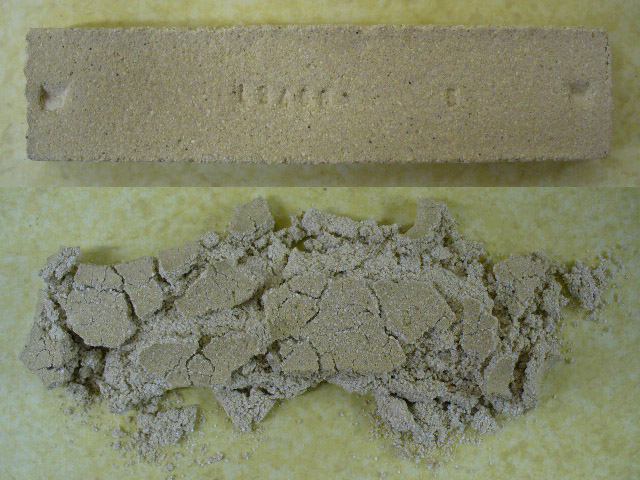| Monthly Tech-Tip | No tracking! No ads! | |
Limestone
| Oxide | Analysis | Formula | Tolerance |
|---|---|---|---|
| CaO | 52.60% | 0.97 | |
| MgO | 1.00% | 0.03 | |
| Al2O3 | 1.00% | 0.01 | |
| SiO2 | 1.00% | 0.02 | |
| Fe2O3 | 0.50% | - | |
| LOI | 43.90% | n/a | |
| Oxide Weight | 58.29 | ||
| Formula Weight | 103.90 | ||
Notes
In ceramics, the value of calcium minerals relates to their readiness to form melt solutions with SiO2 and these solidify as silicates on cooling (glasses and glazes).
While not intuitive (given the high LOI of limestone), in some countries (e.g. Thailand) limestone powder (about 10-20%) is added to clay bodies (they are fired 700-900C). Many benefits have been noted, including: Lower water content needed (and thus lower drying shrinkage), more dense fired matrix, elimination of black coring, increased strength at lower firing temperatures and lower clay percentages in the recipe.
The analysis provided here is hybrid (not theoretical or actual). We started with the theoretical calcium carbonate analysis of 56.1 CaO and 43.9 LOI. Then we added 1% impurities of MgO, Al2O3 and SiO2 plus 0.5% Fe2O3 (all at the expense of CaO). These are amounts that would typically be found in commercial materials. Many are less pure than this (having a lower CaO content), some highly processed grades are more pure.
Related Information
What happens when a limestone clay mix is fired to cone 6?

This picture has its own page with more detail, click here to see it.
The top bar is a mix of calcium carbonate and a middle temperature stoneware clay (equal parts). On removal from the kiln it appears and behaves like a normal stoneware clay body, hard and strong. However, pour water on it and something incredible happens: in a couple of minutes it disintegrates (as it rehydrates). And generates lots of heat as it does so.
Links
| Materials |
Dolomite
An inexpensive source of MgO and CaO for ceramic glazes, also a highly refractory material when fired in the absence of reactant fluxes. |
| Materials |
Calcium Carbonate
In ceramics, calcium carbonate is primarily a source of CaO in raw stoneware and porcelain glazes. |
| Materials |
Precipitated Lime
|
| Materials |
Oyster Shells
|
| Typecodes |
Flux Source
Materials that source Na2O, K2O, Li2O, CaO, MgO and other fluxes but are not feldspars or frits. Remember that materials can be flux sources but also perform many other roles. For example, talc is a flux in high temperature glazes, but a matting agent in low temperatures ones. It can also be a flux, a filler and an expansion increaser in bodies. |
| Minerals |
Limestone
Limestone forms by sedimentation, of coral and shells (biological limestone) or by the precipitation |
| URLs |
http://geology.com/rocks/limestone.shtml
Limestone at Geology.com |
| By Tony Hansen Follow me on        |  |
Got a Question?
Buy me a coffee and we can talk

https://digitalfire.com, All Rights Reserved
Privacy Policy
